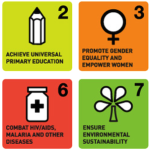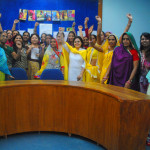Did you know that coming Sunday 5 July the final match of the Fifa Women’s World Cup will take place? In case you missed it, here’s a newsflash for you; the US has qualified and will end up against Japan or England (depending on the match results today). You might be wondering why all of this is not news at all. Well, so am I. With the memory of the madness in Germany when their national male soccer team won the last Cup still fresh in mind, I am reminded soccer is still a (heterosexual) men’s world.


The most common reason given for the lack of attention for female soccer is that female players simply cannot match up physically compared to the men. Although it is true that female and male bodies are physically different, this does not sufficiently explain why the media completely neglects female soccer. See, regardless of whether women run slightly slower than their male counterparts (or not), this should not take any excitement away from watching them play. Even the most hardcore soccer fan would admit that the beauty of soccer lies within the specific techniques of the players. There is absolutely no reason why women should not be able to learn such skills. Some pioneering women players even beat their male counterparts at their own game. Abby Wambach for example currently holds the international goal-scoring record for women and men by having 184 goals on her name.
“I point the camera at what the people want to see, it’s a two way mirror so you can’t blame me”, Jack Johnson sang once. But this logic does not hold. What and how the media covers reality, shapes our realities. The power of media is that you can create demand for something by clever campaigning. Maybe the root of the problem is that making women soccer more popular is not in the interest of men. The disproportionate campaigning for male soccer brings in money for them which in turn allows them the best training and equipment and of course: the biggest pay check.
Beyond this, female soccer is deliberately kept marginal because it challenges notions about what it means to be a girl. They get sweaty, dirty, sometimes bloody and almost warrior-like. In general there is something extremely empowering about women playing sports. My sister, who is just over 5 feet tall, holds a black belt in karate. She can take down any man twice her size. Over the years I have witnessed her journey from an insecure girl who was bullied at school to a strong headed, courageous young woman. She is a perfect example of why women should be encouraged to get in the ring or get on the fields.
Unfortunately at the moment, the only reason for which girls are encouraged to exercise by the media is for looking good, not for personal development or health reasons. The campaign This Girl Can rightfully showed this by highlighting how media shows exercising women as sweat-less, flawless (“I woke up like this”) and slim women. This campaign countered this narrative by adopting slogans such as “I jiggle, therefore I am.”, “Sweating like a pig. Feeling like a fox.” or “I kick balls, deal with it.”
Essentially, we need to realize that female soccer is a feminist issue. Yet alarmingly, even feminists have neglected the inequality in professional sports for too long. Equality in sports is generally not seen as a topic important enough for women’s movements. It might not feel much like activism to cheer for a bunch of women running after a ball, but it is! But the point is the kind of exercise we get does not only shape our bodies, but our relationship with society too. It shapes how we relate to our bodies and that we might all agree, is one of the certain themes of feminism. So ladies, get your freak on, shake off the critiques and play on!
Looking forward to reading your blogs, you can mail us your entries at WriteWithUs@csrindia.org, or upload them at Write With Us.
Donation for Centre for Social Research to Join our effort in rehabilitating Domestic Violence
Discuss this article on Facebook




